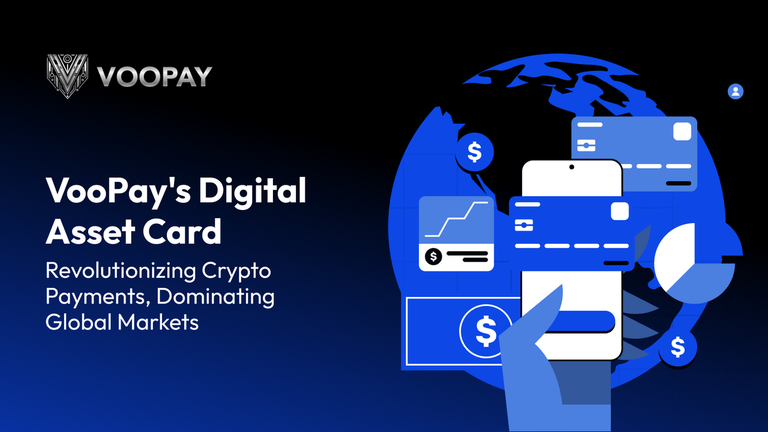VooPay's Digital Asset Card
As the global financial landscape continues to evolve, the interaction between the cryptocurrency market and traditional financial systems is becoming increasingly intertwined.
Crypto payment cards, serving as a critical bridge between the two, are emerging as a new force in the payments sector. According to a report by The Brainy Insights, the global crypto credit card market was valued at $25 billion in 2023 and is projected to surpass $400 billion by 2033, showcasing astonishing growth potential.
Behind this rapid development is the relentless effort of payment providers to bridge the gap between crypto and traditional payment methods, striving to meet users' diverse payment needs.
Currently, crypto payment card products are springing up like mushrooms after a rain and have already integrated with mainstream payment methods like Google Pay, Apple Pay, and Alipay, greatly enhancing their usability. Products like the Crypto. com Visa Card, Binance Card, Bybit Card, and Bitget Card, mostly launched by major cryptocurrency exchanges, hold significant influence in the market.

In terms of technological innovation, some card issuers have even integrated DeFi protocols such as Ethena, Morpho, and USUAL, offering asset appreciation services to users and successfully building a comprehensive financial service ecosystem that extends from payments to wealth management. This further expands the application scope and value of crypto payment cards.
Despite the unique advantages of cryptocurrency payments in terms of speed (46% of users choose it), cross-border cost efficiency (37% value low fees), and financial autonomy (32% pursue decentralization), a survey by Bitget Wallet reveals that their actual application scale still lags significantly behind traditional payment systems. The traditional payment market, worth trillions of dollars, covers the vast majority of daily transactions globally, while crypto payments occupy only a small share, mainly concentrated in niche scenarios like cross-border remittances and digital asset transactions. Users' preference for traditional payment methods primarily stems from concerns about trust and security. The security risks of crypto payments (e.g., hacking and fraud) leave users apprehensive, while traditional payments, backed by mature banking systems, legal protections, and dispute resolution mechanisms, significantly reduce transaction risks. Additionally, the price volatility of cryptocurrencies makes them unsuitable as stable transaction mediums, whereas the stability of traditional fiat currencies better aligns with daily consumer needs. Traditional payments also achieve seamless coverage through extensive POS terminals and online integrations, whereas the limited merchant acceptance of crypto payments restricts their practicality. Furthermore, the low operational barriers of traditional payment tools and the habitual usage formed over time, combined with the complexity and technical barriers of crypto wallets, pose challenges to the widespread adoption of crypto payments.
Against this market backdrop, the VooPay digital asset card stands out, showcasing core advantages such as multi-chain technology integration, global compliance frameworks, and real-time payment innovations, redefining the crypto payment experience
Congratulations @cocomont! You have completed the following achievement on the Hive blockchain And have been rewarded with New badge(s)
Your next target is to reach 50 upvotes.
You can view your badges on your board and compare yourself to others in the Ranking
If you no longer want to receive notifications, reply to this comment with the word
STOPCheck out our last posts:
Hello.
It appears that significant parts of this writing are machine-generated.
We would appreciate it if you could avoid publishing AI-generated content (full or partial texts, art, etc.).
Thank you.
Guide: AI-Generated Content = Not Original Content
Hive Guide: Hive 101
If you believe this comment is in error, please contact us in #appeals in Discord